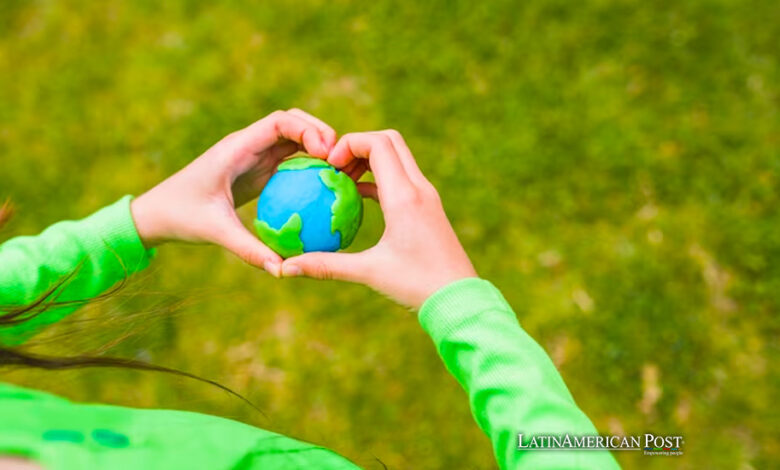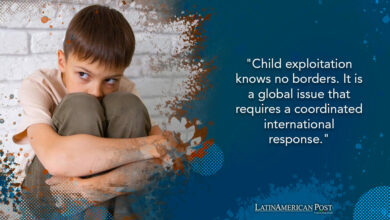The Silent War: The Perilous Path of Latin America’s Environmental Guardians

In 2023, Latin America witnessed the chilling recurrence of targeted violence against its environmental and human rights defenders, with 126 brave souls lost to assassination. Amidst a backdrop of rich biodiversity and entrenched conflicts over land rights, these defenders’ sacrifices underscore a growing crisis that demands immediate attention and action.
Across the vast, verdant expanse of Latin America, a silent war rages—one that pits the guardians of the earth against forces mired in greed and corruption. In 2023, this conflict claimed the lives of 126 human rights and environmental defenders. This grim tally mirrors the figures from the previous year, according to the Inter-American Court of Human Rights (IACHR). This alarming statistic highlights the enduring threat these courageous individuals face and calls into question the effectiveness of measures in place to protect them.
The IACHR, an autonomous body of the Organization of American States based in Washington, D.C., has raised the alarm over the persistently high rates of violence targeting those who dare to stand up for land rights, environmental preservation, and the dignity of indigenous and Afro-descendant communities. The final quarter of 2023 alone saw 54 assassinations, underscoring a disturbing escalation in targeted violence.
Colombia, with its lush landscapes and rich natural resources, emerged as the deadliest battleground, recording 34 murders of activists in 2023, up from 26 the previous year. Brazil, Mexico, Guatemala, Honduras, and Peru followed, painting a harrowing picture of a region under siege by those who view the defense of the earth and human rights as a threat to their exploitative agendas.
Mexico’s Beacon of Hope: A Budget Increase Amidst Mourning
In this context, Mexico’s decision to increase its budget for the protection of human rights defenders and journalists shines as a beacon of hope, even as the IACHR mourns the loss of four Mexican defenders. Though commendable, this gesture by the Mexican government highlights the complex tapestry of challenges that Latin American countries face in safeguarding their environmental and human rights champions.
At the heart of this crisis lies a deadly nexus of illicit land grabs, environmental exploitation, and entrenched interests resistant to change. Latin America’s defenders of the earth often find themselves targeted by a spectrum of adversaries, from multinational corporations and local business interests to paramilitary groups and drug cartels. These defenders’ efforts to protect their ancestral lands, preserve their environment, and uphold their communities’ rights frequently put them in the crosshairs of those prioritizing profit over people and the planet.
The plight of environmental and human rights defenders in Latin America is not isolated but reflects a broader pattern of conflict and resistance seen across the region. From the Amazon rainforest to the mountainous terrains of Central America, the struggle to protect the environment transcends borders, linking diverse communities in a shared battle against exploitation and destruction.
Pathways to Protection
Protecting Latin America’s environmental and human rights defenders necessitates a comprehensive and multi-dimensional strategy that delves into the underlying causes of conflict while bolstering the mechanisms designed to ensure their safety. A crucial aspect of this approach involves strengthening legal frameworks. This means not only implementing but rigorously enforcing laws that acknowledge and safeguard the rights of these defenders. By doing so, it’s essential to ensure that those responsible for acts of violence against defenders are promptly brought to justice, thus reinforcing the rule of law and protecting human rights.
Moreover, the role of international solidarity must be balanced. Garnering support and scrutiny from the global community can exert considerable pressure on governments and corporate entities, compelling them to adhere to human rights and environmental standards. This international spotlight shines a light on injustices and provides a layer of protection to those at the forefront of defending environmental and human rights.
Another pivotal element in safeguarding these defenders is community empowerment. By backing grassroots movements and empowering local communities to stand up for their rights collectively, their resilience against external threats is significantly enhanced. This collective strength is vital in creating a robust defense against those who seek to exploit or harm, providing a foundation of support and shared resolve among community members.
Additionally, introducing enhanced security measures tailored to protect defenders at risk is paramount. These measures include physical security provisions and establishing emergency response mechanisms designed to respond swiftly to threats. Such targeted protection programs are essential in providing a safer environment for defenders to continue their work without fear of reprisal.
Lastly, promoting dialogue and conflict resolution is fundamental in addressing land and resource use disputes. Encouraging open communication between communities, government bodies, and business interests can pave the way for peaceful conflict resolution. This approach helps mitigate tensions and fosters mutual respect and understanding, which is crucial for protecting environmental and human rights defenders in the long term.
Conclusion: A Call to Action
The assassination of 126 environmental and human rights defenders in Latin America in 2023 is a tragic testament to the region’s ongoing struggle for justice and sustainability. As we mourn the loss of these brave individuals, their legacy demands more than remembrance—it calls for action. With its unparalleled biodiversity and vibrant cultures, Latin America stands at a crossroads. The path chosen will determine not only the future of its environmental guardians but also the health of our planet and the rights of its people.
Also read: Beyond Tacos and Empanadas: Unveiling the Rich Culinary Mosaic of Latin America
As the international community, governments, and citizens reflect on this crisis, the time for concerted action is now. By forging alliances, strengthening protections, and championing the cause of environmental and human rights defenders, we can turn the tide against violence and ensure that the defense of the earth and its inhabitants is no longer a deadly endeavor. In doing so, we honor the memory of those lost and pave the way for a more just, sustainable, and peaceful Latin America.





